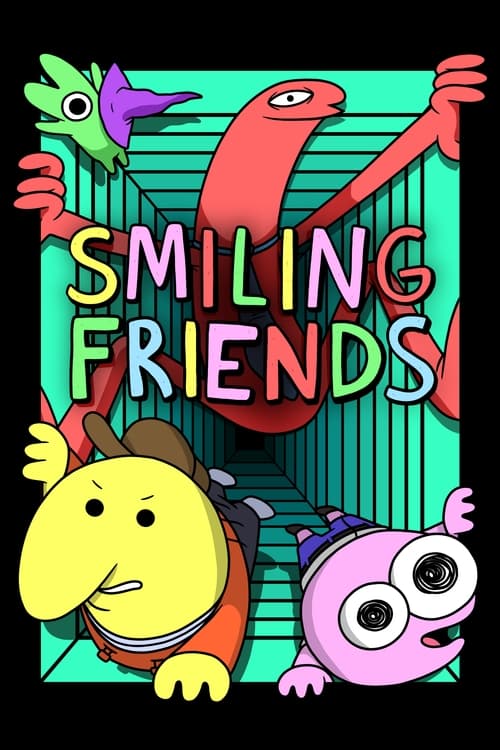
Ask Your Own Question
What is the plot?
The episode opens with the sixteen amateur chefs entering the MasterChef Québec kitchen, greeted by judges Stefano Faita and Martin Picard. The judges announce the first challenge: each contestant must cook a dish that is deeply personal to them, one that holds significant meaning or memory. This task is designed to give them a major advantage in the competition. The contestants disperse to gather ingredients and begin cooking, visibly focused and emotionally invested in their dishes.
As the cooking progresses, the judges circulate among the contestants, observing techniques and offering brief comments. Some contestants display confidence and skill, while others struggle with timing or ingredient choices. The atmosphere is tense but hopeful, with contestants sharing glimpses of their personal stories behind their dishes.
Once the cooking time ends, the contestants present their dishes to the judges. The judges taste each dish carefully, discussing the flavors, presentation, and emotional connection conveyed. Several dishes receive praise for creativity and execution, while others are critiqued for lacking balance or clarity. The judges deliberate to determine who will gain the advantage.
Following the tasting, the judges reveal the winner of the personal dish challenge. This contestant is awarded a significant benefit for the next round, such as immunity or the power to influence team selection. The other contestants react with a mix of admiration and determination to improve.
Next, the contestants face the Mystery Box challenge. Each contestant lifts their box to discover a unique set of disparate ingredients, differing from those of their peers. The judges explain that contestants have the option to exchange ingredients with one another, encouraging negotiation and strategy. The contestants quickly assess their boxes and begin trading items to better suit their planned dishes.
The cooking phase of the Mystery Box challenge begins, with contestants working under time pressure to create a dish that highlights the mystery ingredients. The kitchen buzzes with activity, and judges monitor progress closely. Some contestants take bold risks, while others play it safe.
At the end of the allotted time, the contestants present their Mystery Box dishes to the judges. The judges taste and critique each dish, noting those that successfully integrated the unusual ingredients and those that fell short. The judges announce the top performers, who gain an advantage in the upcoming team challenge.
The episode then transitions to the team challenge, where the judges reopen a restaurant setting. The contestants are divided into teams and tasked with serving a convivial yet upscale meal to a guest clientele. The teams must coordinate to prepare multiple portions efficiently while maintaining quality and presentation.
Midway through the service, the judges deliver a surprise announcement: the teams must add an additional dish to their menu, increasing the complexity and urgency of the challenge. The contestants scramble to adjust their plans and manage the increased workload, leading to heightened tension and frantic kitchen activity.
Despite the pressure, the teams push through, plating and serving dishes to the guests. The judges observe the service, noting teamwork, communication, and culinary execution. After the service concludes, the judges provide feedback, highlighting strengths and weaknesses of each team.
The episode closes with the judges identifying contestants who are at risk of elimination based on their performance throughout the challenges. These contestants face a pressure test where they must recreate a classic French bistro dish perfectly. The pressure test is intense, with contestants focusing on precision and technique.
Those who fail the pressure test are given a final chance to save their apron by creating a creative dish that stands out. The episode ends with the judges making their elimination decisions, sending one or more contestants home while the rest advance in the competition.
What is the ending?
There is no detailed, publicly available plot summary or scene-by-scene breakdown for MasterChef Québec, Season 3, Episode 2 (2025) in the provided search results. The available information confirms the episode aired on September 8, 2025, and that the show features amateur home cooks competing in culinary challenges judged by Martin Picard and Stefano Faita. However, the specific events, character fates, and narrative details of this episode are not documented in the sources.
If you require a detailed, scene-by-scene narrative, it would be necessary to watch the episode directly, as no such transcript or summary exists in the current search results. The sources do not provide enough information to reconstruct the episode's ending or the fates of its participants with the level of detail requested.
Is there a post-credit scene?
There is no available information indicating that MasterChef Québec, Season 3, Episode 2 (2025) includes a post-credit scene. The sources reviewed, including episode summaries and official listings, do not mention any post-credit content or scenes following the episode's conclusion.
What specific challenges did the contestants face in Episode 2 of MasterChef Québec Season 3?
In Episode 2, contestants faced a battle of desserts challenge where several candidates competed to win white aprons, including Jessica Francis, Ginette Rainville, Mariel Jomphe, and Diane Guillot. Later, there was a battle of seafood pasta among Julie Couvrette, Philippe, and Sonia Rhéaume. The episode ended on a cliffhanger as judges were about to reveal the winner of the white apron. Additionally, contestants had to recreate a classic French bistro dish perfectly to avoid elimination, and those who failed had a final chance to fight for their aprons by using creativity to stand out.
Which contestants won white aprons in Episode 2, and what were their backgrounds?
In Episode 2, Fadwa and Stéphane won white aprons continuing from the previous episode. Mariel Jomphe, a 24-year-old brewer from Natashquan, also won a white apron after the dessert battle. Other contestants who won white aprons included Alysan Boudreault, a 24-year-old nurse from Quebec; Sandra Plourde, a 34-year-old food inspection team leader from Ste-Croix; and Jean-Christophe Nadeau, a 30-year-old director of board game stores from Quebec. The episode featured a diverse group of amateur cooks from various professions and regions.
What was the emotional atmosphere among contestants during the challenges in Episode 2?
The emotional atmosphere was tense and competitive, with contestants feeling nervous and under pressure as they presented their dishes to the judges. Some were praised, while others took risks and feared elimination. The moment of tasting was increasingly nerve-wracking, especially for those in danger who had to recreate classic dishes perfectly or face elimination. The episode ended on a suspenseful note with a cliffhanger about the white apron winner, heightening the emotional stakes.
How did the judges influence the progression of Episode 2 in Season 3?
Judges Martin Picard and Stefano Faita played a critical role by evaluating dishes and deciding who won white aprons and who faced elimination. They set challenges such as the dessert battle and seafood pasta battle, and later announced a shock challenge requiring teams to add a dish to their service, increasing difficulty and urgency. Their decisions directly affected contestants' fates and the episode's dramatic tension, culminating in a cliffhanger about the white apron winner.
What cliffhanger ended Episode 2 of MasterChef Québec Season 3?
Episode 2 ended with a cliffhanger as the judges were about to reveal the winner of the white apron after the seafood pasta battle among Julie Couvrette, Philippe, and Sonia Rhéaume. This suspenseful ending left viewers uncertain about which contestant would advance, heightening anticipation for the next episode.
Is this family friendly?
MasterChef Québec Season 3, Episode 2 (2025) is generally family friendly but may contain some elements that could be mildly objectionable or upsetting for children or sensitive viewers. These include:
- Moderate profanity: Occasional mild swearing such as "hell," "damn," and similar words may be used, but stronger expletives are typically censored or bleeped out.
- Mild alcohol presence: Wine and other alcoholic beverages may be shown being consumed during meals or used in cooking.
- Moderate intensity: The judges and contestants can display moments of anger or frustration, including raised voices, yelling, and occasional aggressive gestures like fist pounding or dish smashing, which might be intense for some viewers.
There is no sexual content or nudity, and violence is limited to kitchen-related tension rather than physical harm. Overall, the show is suitable for most family audiences but parents may want to be aware of the occasional strong language and emotionally intense moments before allowing very young or sensitive children to watch.






















